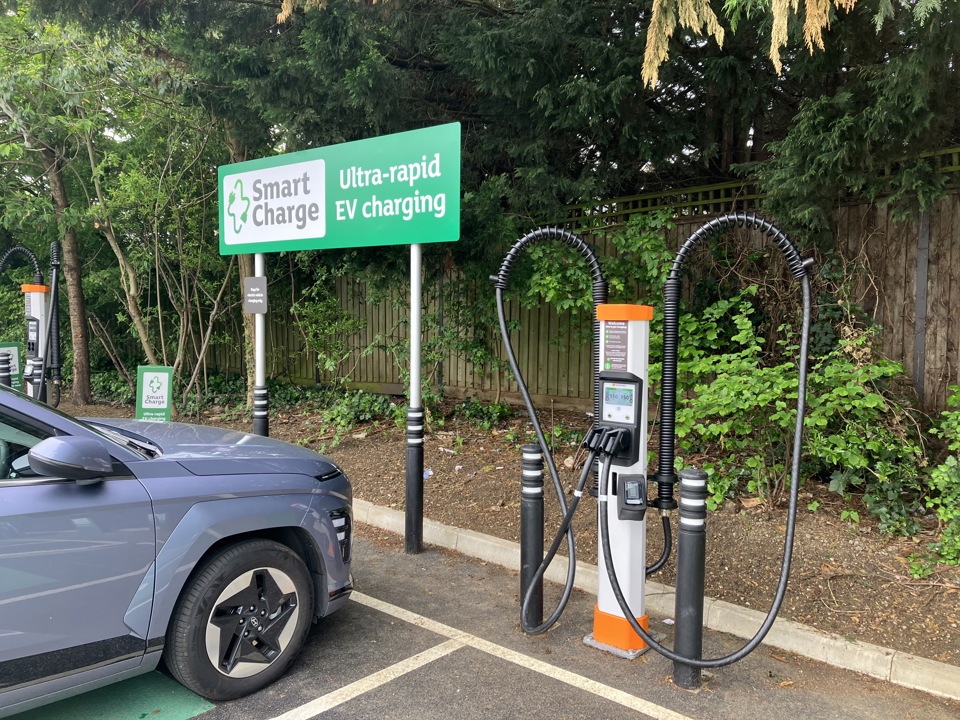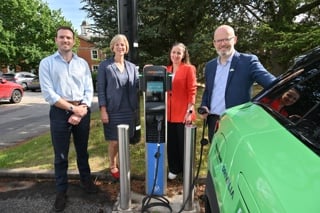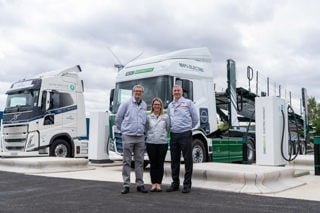The scale and capacity of the UK’s public electric vehicle (EV) charging network has been revealed in new data published by the Department for Transport (DfT).
There were 64,632 public charging devices installed in the UK at the start of July – a 45% uplift on the 20,612 available this time last year.
The DfT figures, provided by Zapmap, show that 12,474 devices deliver 50kW of power or above, 19% of all charging devices, while 38,468 had a power rating of 3kW up to 8kW, more than half (60%) of all charging devices.
Almost half (48%) of all charge points (30,921) were designated as ‘destination’ chargers and more than a third (37%) were designated as ‘on street’ chargers, equating to 23,988 chargers.
During the last quarter, from April 1 to June 30, there was an 8% increase (4,962) in the number of chargers on the public network.
All regions reported an increase except the North East, which had a decrease of 1.2%.
The DfT acknowledges that there is an uneven geographical distribution of charging devices within the UK.
Some local authorities have bid for Government funding for charging devices, and others have not. Most of the provision of this infrastructure, it says, has been market-led, with individual charging networks and other businesses (such as hotels) choosing where to install devices.
Public charging devices per 100,000 of population by UK country and region
London and Scotland had the highest level of charging provision per 100,000 of population, with 234 and 103 devices per 100,000 respectively.
In comparison, the average provision in the UK was 96 per 100,000.
Northern Ireland had the lowest level of charging device provision in the UK, with 32 devices per 100,000, followed by Yorkshire and the Humber with 56 devices per 100,000.
Adam Hall,director of Drax Electric Vehicles, said: “We are seeing a record number of electric vehicles on our roads with zero emission vehicles accounting for 2.7% of all cars in use in 2023.
“Uptake is often higher in major metropolitan cities like London, where policies such as the ULEZ, incentivise EV ownership. Our research shows a need for further development in charging infrastructure across other cities .”
He added: “As EV adoption grows, we must focus on becoming more EV-friendly. Offering EV chargers is no longer a premium experience but a necessity.
“These findings underline the growing importance of EV infrastructure to support the UK's net-zero ambitions. This is a key area for growth and investment to attract more eco-conscious travellers and drivers.”
Public 50kW and above charging devices per 100,000 of population by UK country and region
Scotland had the highest rate of 50kW and above device provision at 26.1 charging devices rated 50kW and above per 100,000, while the average provision in the UK was 18.5 per 100,000.
The provision of 50kW and above charging devices was lowest for Northern Ireland with 7.9 charging devices rated 50kW and above per 100,000.
London was the second lowest region with 13.7 charging devices rated 50kW and above per 100,000.
























Login to comment
Comments
No comments have been made yet.